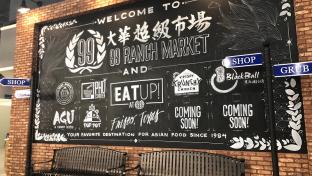How to Capture Customer Loyalty During a Crisis
Crisis is always an opportunity to display strength and resilience. Human adaptability and endurance can be seen in every sector during the global pandemic of the past few months, and that includes retail and marketing. The way that consumers buy has shifted, and brands have correspondingly adjusted their messaging to bring support, encouragement and cheer in these difficult times.
Quotient has released a dashboard showing grocery shopper behavior, and some of the changes aren’t what one might expect. There were shifts to buying more essential and emergency goods, but there have also been surges in seasonal recreational buys and heightened interest in personal development, wellness and family-oriented products. Whether we’re talking about leading companies with household name brands and life-loyal fans, store brands looking to promote value and economy, or challenger brands seeking to expand their consumer base, these fluctuations present unique, truly once-in-a-lifetime opportunities for brands to step up for their customers.
How Are Consumers Buying Differently?
Across the United States, consumers rushed to grocery stores to stock up the week of March 9. In cities like Los Angeles and Las Vegas, grocery stores saw upwards of 30% more shoppers week over week as Americans prepared to batten down the hatches and self-quarantine. This spike was followed by a national decline in grocery trips, possibly due to Americans’ following isolation guidelines and reducing their trips out in general.
However, there was an uptick in dollar spend per basket, meaning that with each excursion, shoppers were buying more products to stock up for the time between. This indicates that shoppers are thinking ahead, planning their purchases as best they can, and making more strategic, deliberate buying decisions during their more sparse and crucial outings.
What Are Consumers Buying Differently?
The week of the spike in grocery store visits, March 9, saw shoppers loading up on what you might expect. The top 10 items with the greatest sales increases almost exclusively consisted of cleaning supplies, first-aid items, canned food and boxed food.
Pantry essentials and cleaning items remained leading purchases over the weeks that followed, along with baking supplies and mixes. However, as we entered spring in full swing, more seasonal and recreational items pulled ahead in terms of sales lift: sunscreen, graham crackers, baked beans, buns, bagged salads and cocktail mixes saw huge gains the week of May 3.
Changing top products show that people are still after staples like beef, but that they’re also making space in their lives for the onset of summer, with all the makings of a backyard family barbecue.
How Are Consumers Thinking Differently?
Talked-about topics on social media are a good way to look at what’s on the public’s mind. Social media content engagement trends indicate increased interest during the first week of May year over year in pet food (55% lift), sauces (17% lift) and frozen snacks (53% lift). Previous weeks showed enormous lifts in topics like hair care (56%), staycations (229%), athleisure (37%), disinfectant (494%) and the immune system (124%).
From this, we can conclude that while indeed people are interested in their health and staying safe and clean, they’re also turning their attention to leisure projects and taking care of themselves, their families, their pets and their morale.
What Does This Mean for Brands?
Overall, it’s important to note that while brands should stay sensitive about the times in their marketing messaging, that doesn’t mean they should refrain from advertising products that are “nonessential.” For example, while it’s true that ads around big Labor Day block parties would be inappropriate, ads about gathering with one’s nuclear family around the picnic table in the yard would hit exactly the right chord. While ads about making an impression at the beach are ill-fitting, messaging about pampering yourself with a home spa day is very relevant. Social media results and purchasing data shows us that people are looking to maintain normalcy and fun in this environment. Brands can help them find the best products to do this by tailoring their messaging.
In particular, there is immense opportunity for challenger brands and store brands to take advantage of shifting routines, interests and supply availability to get customers to give them a shot. By the same token, the time is now for established brands to connect with customers emotionally through effective ad campaigns to solidify their loyalty and protect market share.
Despite crisis conditions, it behooves brands to think about how their target audiences and loyal consumers are actually behaving on the ground, and adapt their marketing decisions to reflect these changes. Brands provide value to customers in all kinds of ways, whether it be an essential food staple or a novelty or beauty product that brings joy and comfort. It is especially times like these that brands need to communicate that value.







